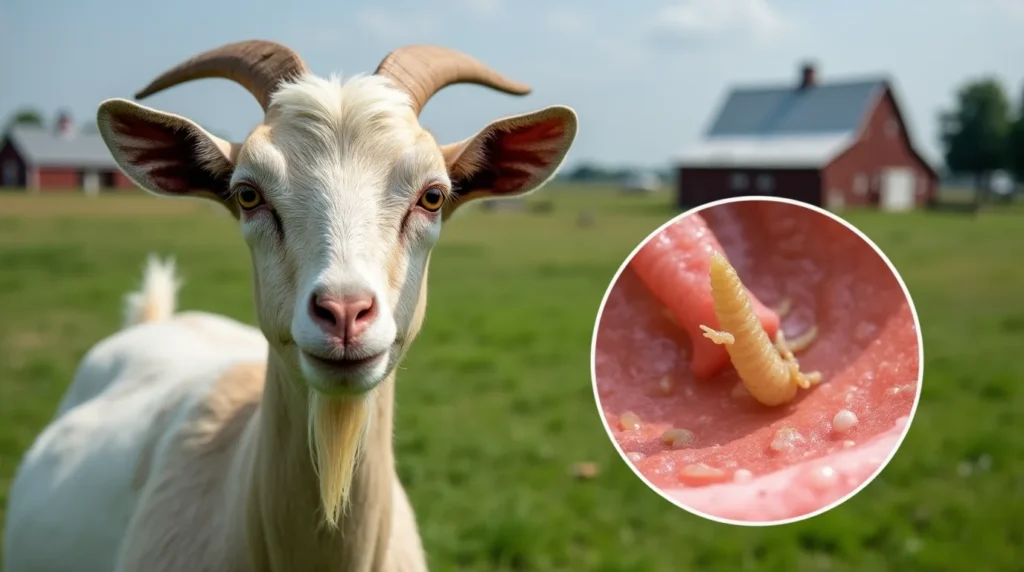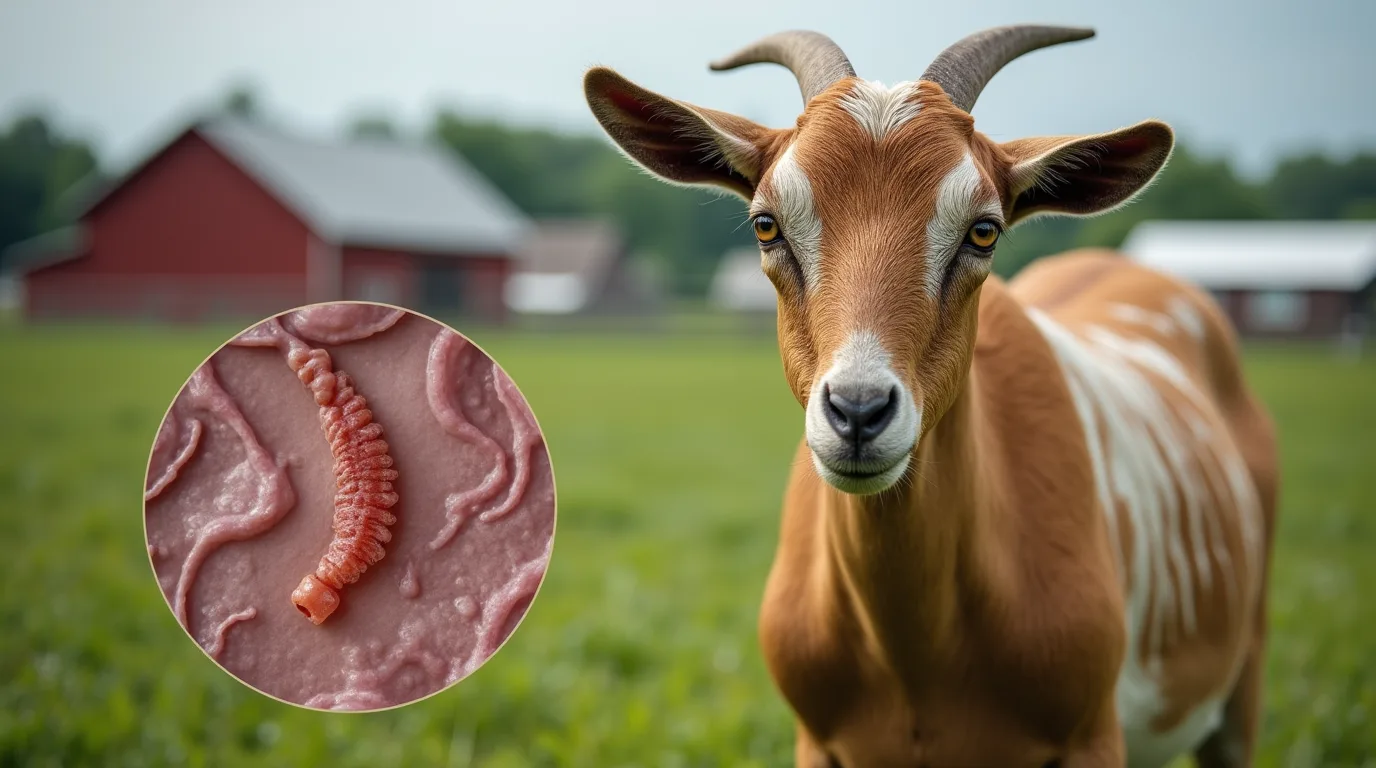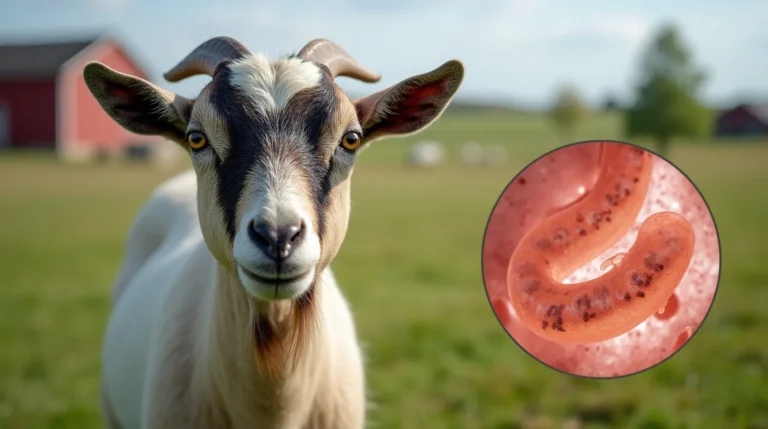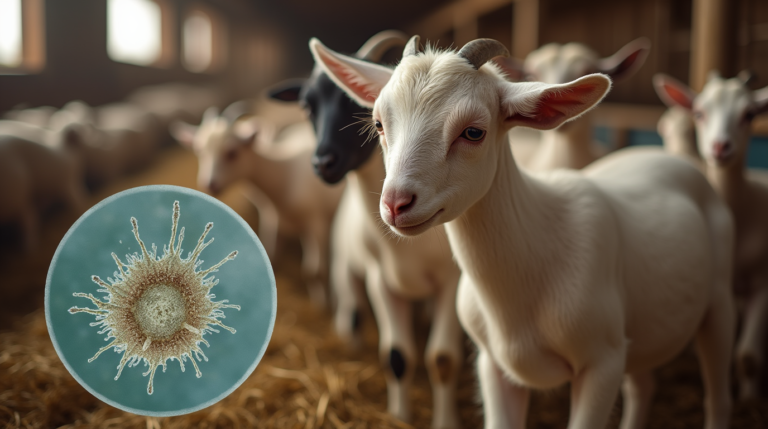Protect your goats from deadly chemical poisoning in Goats ! Learn about 5 critical toxins, prevention strategies, and emergency response techniques for responsible goat owners.

Table of Contents
Goat farming requires vigilant care and a deep understanding of potential health hazards. Chemical poisoning in Goats , represents one of the most serious yet preventable threats to goat health, capable of causing rapid and devastating consequences. As responsible livestock managers, understanding the landscape of chemical toxins can mean the difference between life and death for these vulnerable animals.
This comprehensive guide will explore the most dangerous chemical toxins threatening goats, providing farmers and pet owners with critical insights into prevention, identification, and emergency response strategies. Whether you’re a seasoned goat herder or a newcomer to small ruminant care, the knowledge contained in these pages could save lives.
Understanding Chemical Poisoning in Goats: An Overview
Chemical poisoning occurs when goats are exposed to toxic substances through various routes, including:
- Ingestion
- Skin absorption
- Inhalation
- Environmental contamination
Prevalence and Impact
Recent agricultural studies suggest that approximately 15-20% of unexpected livestock deaths can be attributed to chemical poisoning, making it a significant concern for goat owners nationwide.
Top 5 Chemical Toxins Threatening Goat Health
1. Pesticides and Herbicides
Types of Dangerous Chemicals
- Organophosphates
- Carbamate compounds
- Glyphosate-based herbicides
Potential Symptoms:
| Chemical Type | Primary Symptoms | Severity |
| Organophosphates | Muscle tremors, excessive salivation, respiratory distress | High |
| Carbamates | Neurological impairment, weakness | Moderate |
| Glyphosate | Digestive complications, potential organ damage | Variable |
Prevention Strategies
- Maintain strict boundaries between grazing areas and chemically treated zones
- Use organic farming practices when possible
- Implement comprehensive fencing to prevent chemical exposure
2. Heavy Metal Contamination
Dangerous Heavy Metals
- Lead
- Mercury
- Arsenic
- Cadmium
Exposure Sources:
- Old paint chips
- Contaminated water sources
- Industrial waste areas
- Certain soil compositions
Detection and Management
- Regular soil and water testing
- Implementing strict environmental controls
- Using certified clean grazing areas
3. Household and Industrial Chemicals
High-Risk Chemicals
- Antifreeze
- Cleaning solvents
- Motor oils
- Paint thinners
Critical Warning: Even small quantities of these chemicals can be fatal to goats.
4. Agricultural Fertilizers
Dangerous Compounds
- Nitrogen-based fertilizers
- Phosphorus-rich chemical blends
- Synthetic mineral supplements
Potential Health Impacts:
- Kidney dysfunction
- Metabolic disruptions
- Reproductive challenges
5. Toxic Plant Chemicals
Chemical Compounds in Dangerous Plants
- Alkaloids
- Glycosides
- Tannins
- Oxalates
Recommended Action: Conduct thorough pasture assessments to identify and remove toxic plant species.
Emergency Response Protocol
Immediate Steps for Chemical Poisoning Suspicion
- Isolate the affected goat
- Contact a veterinarian immediately
- Collect potential chemical samples
- Document symptoms and exposure timeline
- Prevent further contamination
Veterinary Treatment Approaches
- Gastric decontamination
- Supportive fluid therapy
- Symptomatic treatment
- Potential antidote administration
Recommended Pet Products on Amazon
- Chemical Exposure Safety Kit for Livestock
- Emergency Veterinary First Aid Bag
- Protective Grazing Fence Markers
- Professional-Grade Water Testing Kit
chemical poisoning in goats (FAQ)
Q1: How quickly can chemical poisoning affect goats? Chemical poisoning can occur within minutes to hours, depending on the toxin and exposure level.
Q2: Are some goat breeds more susceptible to chemical poisoning? While all goats are vulnerable, younger animals and those with compromised immune systems face higher risks.
Q3: Can chemical poisoning be prevented completely? While 100% prevention is challenging, comprehensive management and awareness significantly reduce risks.
Conclusion
Protecting goats from chemical poisoning in goats requires continuous education, proactive management, and swift action. By understanding potential toxins, implementing preventive strategies, and maintaining a vigilant approach, goat owners can create safer, healthier environments for their livestock.
Call to Action: Share your experiences with chemical safety in goat farming! Leave a comment below or explore more expert pet care guides at BlithePet
Additional Resources
- Local veterinary extension offices
- Agricultural chemical safety guidelines
- Livestock management workshops
Disclaimer: This article provides general information and should not replace professional veterinary advice.





